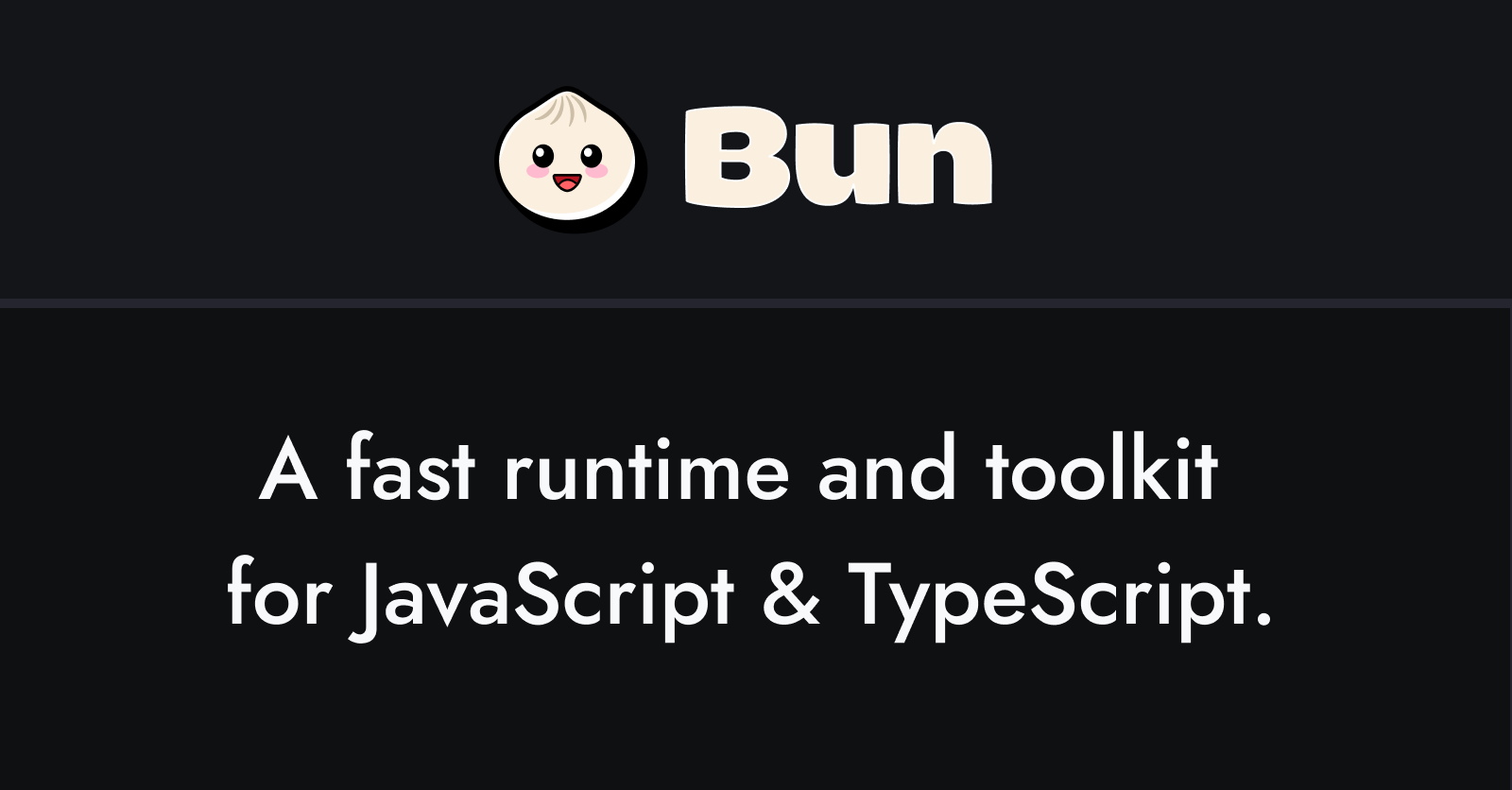Unlocking Performance with Bun: An In-Depth Guide
 Anaz S. Aji
Anaz S. Aji
The landscape of JavaScript runtime environments has been dominated by Node.js for over a decade. However, as web applications become increasingly complex, developers seek more efficient ways to handle performance-intensive tasks. Enter Bun, a new JavaScript runtime that promises to deliver blazing-fast performance and modern features that streamline development processes. In this comprehensive guide, we will explore what Bun is, its key features, and why you should consider using it for your next project.
Introduction to Bun
Bun is a modern JavaScript runtime built from the ground up to offer superior performance and a suite of built-in tools that make development more efficient. Created by Jarred Sumner, Bun aims to provide an all-in-one solution that eliminates the need for multiple separate tools often used in the Node.js ecosystem.
Bun leverages the power of WebAssembly and uses JavaScriptCore, the engine behind Safari, which is known for its speed and efficiency. This combination allows Bun to execute JavaScript code faster than Node.js and other traditional JavaScript runtimes.
Key Features of Bun
Performance
The cornerstone of Bun’s appeal is its unparalleled performance. Several factors contribute to this:
Optimized Engine: Bun uses JavaScriptCore, which is designed to be fast and lightweight. This engine is highly optimized for performance, making it a great choice for executing JavaScript code.
WebAssembly: Bun takes advantage of WebAssembly (Wasm), a binary instruction format for a stack-based virtual machine. WebAssembly enables near-native performance for web applications and is designed to complement JavaScript.
Efficient System Calls: Bun reduces overhead by minimizing system calls and using optimized algorithms for common tasks.
Built-in Tooling
Bun comes with a variety of built-in tools that simplify the development process:
Bundler: Bun includes a built-in bundler that compiles JavaScript and TypeScript code, reducing the need for external tools like Webpack or Rollup.
Transpiler: With built-in support for TypeScript and JSX, Bun can transpile code on-the-fly, making it easier to write modern JavaScript and React applications.
Task Runner: Bun’s built-in task runner can replace tools like Gulp or Grunt, allowing you to automate common development tasks directly within the runtime.
Compatibility
Bun aims to be fully compatible with Node.js, enabling developers to run existing Node.js applications with minimal modifications. Key aspects of this compatibility include:
Node.js API Support: Bun supports a majority of Node.js APIs, ensuring that most Node.js modules and applications can run without significant changes.
NPM Compatibility: Bun is compatible with the npm registry, allowing you to install and use npm packages seamlessly.
Cross-Platform: Bun is designed to work on multiple operating systems, including macOS, Linux, and Windows.
Ease of Use
Bun focuses on developer experience, providing a straightforward and intuitive interface:
Single Binary: Bun is distributed as a single binary file, simplifying installation and updates.
Integrated Tools: By integrating bundling, transpiling, and task running into the runtime, Bun reduces the complexity of managing multiple development tools.
Rapid Development: Bun’s performance and built-in tools allow for faster development cycles, enabling developers to iterate quickly.
Why Use Bun for Performance
Speed
One of the primary reasons to use Bun is its speed. Benchmarks have shown that Bun can execute JavaScript code significantly faster than Node.js. This speed advantage is particularly beneficial for performance-intensive applications, such as real-time data processing, high-frequency trading systems, and large-scale web applications.
Reduced Complexity
Bun’s built-in tooling reduces the need for multiple separate tools and configurations. This not only simplifies the development process but also minimizes potential compatibility issues and maintenance overhead. By providing an all-in-one solution, Bun streamlines the development workflow and allows developers to focus on writing code rather than managing tools.
Enhanced Developer Experience
Bun’s ease of use and integrated tools enhance the developer experience by providing a more cohesive and efficient workflow. Developers can quickly set up and start working on projects without the need for extensive configurations or installations. This rapid setup is especially beneficial for new projects or for onboarding new team members.
Modern Features
Bun’s support for modern JavaScript features, including TypeScript and JSX, allows developers to use the latest language advancements without the need for additional transpilers or configurations. This built-in support ensures that developers can write cleaner, more maintainable code using the most up-to-date syntax and features.
Setting Up Bun
Installation
Installing Bun is straightforward, thanks to its single binary distribution. Follow these steps to install Bun on your system:
macOS and Linux
Download the Bun binary:
curl -fsSL https://bun.sh/install | bashAdd Bun to your PATH:
export PATH=$HOME/.bun/bin:$PATHVerify the installation:
bun --version
Windows
Download the Bun installer from the official website.
Run the installer and follow the on-screen instructions.
Verify the installation:
bun --version
Basic Usage
Once Bun is installed, you can start using it to run JavaScript code, bundle projects, and more.
Running JavaScript Code
To run a JavaScript file with Bun, use the following command:
bun run your-file.js
Bundling Projects
To bundle a project, navigate to the project directory and run:
bun bundle src/index.js -o dist/bundle.js
Running a TypeScript File
Bun can transpile and run TypeScript files directly:
bun run your-file.ts
Using the Task Runner
Create a bunfig.json file in your project root to define tasks:
{
"scripts": {
"build": "bun bundle src/index.js -o dist/bundle.js",
"start": "bun run dist/bundle.js",
"test": "bun test"
}
}
Run tasks using the following command:
bun run build
Comparing Bun to Other Runtimes
Bun vs. Node.js
Performance: Bun outperforms Node.js in execution speed and memory usage, making it a better choice for performance-critical applications.
Built-in Tooling: Unlike Node.js, which requires additional tools for bundling and transpiling, Bun includes these tools natively, simplifying the development process.
Modern Features: Bun supports modern JavaScript features out of the box, whereas Node.js often requires additional configuration.
Bun vs. Deno
Compatibility: Bun aims for full compatibility with Node.js, making it easier to migrate existing Node.js projects. Deno, on the other hand, has a different module system and API, which can require significant changes to existing code.
Tooling: Both Bun and Deno include built-in tooling, but Bun’s integration with npm and its performance optimizations give it an edge.
Performance: While Deno is also designed for performance, Bun’s use of JavaScriptCore and WebAssembly provides a unique performance advantage.
Real-World Applications
Web Servers
Bun’s speed and efficiency make it an excellent choice for building high-performance web servers. Its compatibility with Node.js means that popular frameworks like Express can be used with minimal changes.
Microservices
Bun’s ability to handle numerous concurrent connections efficiently makes it suitable for microservices architectures, where performance and scalability are critical.
Serverless Functions
The lightweight nature of Bun makes it ideal for serverless functions, which benefit from quick cold start times and efficient execution.
Real-Time Applications
For applications that require real-time data processing, such as chat applications, gaming servers, and financial systems, Bun’s performance optimizations can lead to significant improvements in responsiveness and scalability.
Conclusion
Bun is a powerful new player in the JavaScript runtime landscape, offering unparalleled performance and a suite of built-in tools that simplify development. Its compatibility with Node.js and support for modern JavaScript features make it an attractive choice for developers looking to enhance their workflows and build high-performance applications. By leveraging Bun’s capabilities, developers can unlock new levels of efficiency and productivity in their projects.
Whether you are building a small web application or a large-scale distributed system, Bun provides the tools and performance needed to succeed. Start exploring Bun today and experience the future of JavaScript development.
Subscribe to my newsletter
Read articles from Anaz S. Aji directly inside your inbox. Subscribe to the newsletter, and don't miss out.
Written by

Anaz S. Aji
Anaz S. Aji
I am a dedicated Mobile Developer with a strong passion for exploring the latest advancements in technology and the dynamic world of cryptocurrency. My curiosity and enthusiasm drive me to continuously seek out and experiment with innovative solutions, ensuring that I stay at the forefront of industry trends and developments.